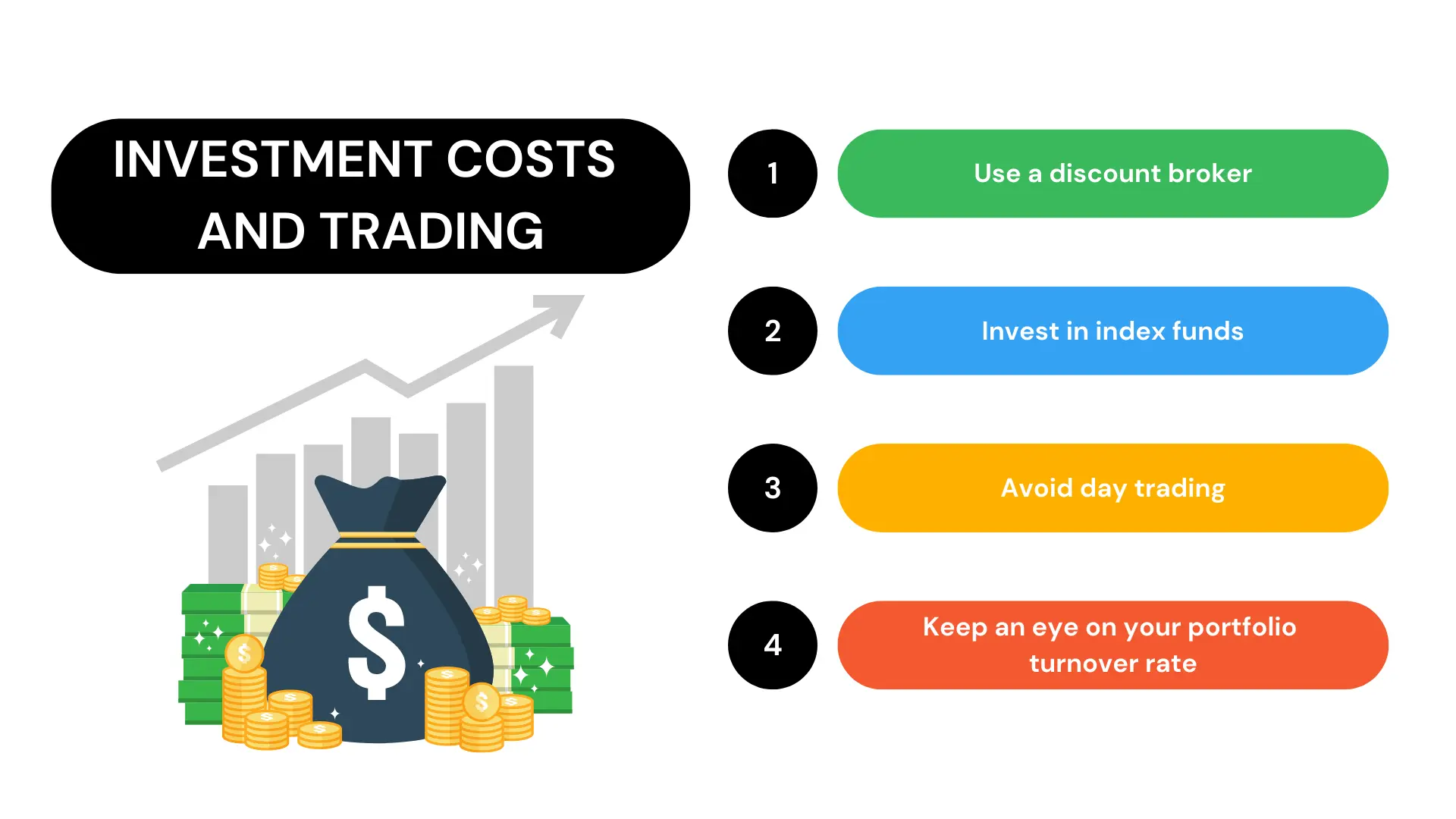How To Make $500 a Month in Dividends
Income investors are always looking for new opportunities to build a reliable and consistent stream of income. One such opportunity is to collect dividends from stocks. But first, what are dividend stocks?
Dividend stocks are a type of stock that pays out a portion of its profits to shareholders in the form of a cash dividend. The dividends can be paid on a regular basis, such as quarterly or annually, or they can be paid out in special cases, such as when the company has a particularly good year.
Dividend stocks are often seen as a sign of stability and profitability, and many investors prefer to own them for that reason. Companies that offer dividends tend to be more mature and have lower levels of risk than companies that don’t offer dividends.
At first glance, it may seem difficult to generate significant dividend income. However, there are many quality stocks that offer healthy and sustainable dividends. In addition, there are a number of strategies that investors can use to boost their dividend income.
If you are looking for ways to make $500 a month in dividends, here are a few tips to help you get started.
1. Save As Much Money As Possible To Start Investing
It’s no secret that in order to see substantial investment gains, you’ll need to start with a healthy chunk of change. Depending on how aggressive you want to be with your investments, anywhere from $50,000 to $100,000 or more may be required. Remember, this is just the starting point – you’ll also need to contribute regularly to maintain those gains.
If you’re serious about growing your money through investing, it’s time to start saving. Start by evaluating your spending habits and see where you can cut back – even by a little bit each month. You may be surprised at how much extra cash you can free up this way.
Then, put that money into a dedicated investment account and start watching it grow.
2. Acquire a Mindset That Is Focused on the Long Term
In order to make $500 a month in dividends, you also need to have a mindset that is focused on the long term. This means being patient and taking the time to find quality stocks that will provide consistent growth over time. It’s important to remember that there is no such thing as a quick fix when it comes to investing. If you’re looking for a way to get rich quick, you’re most likely going to be disappointed.
The key to success with dividend investing is finding companies that are able to grow their profits steadily over time. This may take some research on your part, but it will be worth it in the end.
By focusing on the long term, you’ll be able to avoid making rash decisions that could hurt your portfolio in the future.
3. Look for High-Quality Stocks That Offer a High Yield
When looking for high-quality stocks to buy and hold for the long run, it’s important to find ones that offer a high yield. This is another step in the process of how to make $500 a month in dividends.
There are a few things you’ll want to look for when searching for high-yield stocks. The company should have a stable history of paying dividends, and its payout ratio should be reasonable. You’ll also want to make sure the stock is trading at a reasonable price, relative to its earnings.
Finally, it’s important to do your due diligence and make sure the company is in good financial shape. You don’t want to invest in a company that’s likely to go bankrupt or cut its dividend payments in the near future.
4. Buy Stocks With a History of Dividend Increases

When looking for stocks to buy, you may want to consider those that have a history of increasing their dividends. This is yet another step in the process of how to make $500 a month in dividends.
Companies that have consistently raised their dividends tend to be more stable and have a lower chance of cutting them during tough times. This makes them attractive investments for long-term investors.
There are many online resources that can help you find dividend-paying stocks. For example, you can check out our article on healthy companies that pay out the highest dividends. You’ll see the top companies that are both healthy, have a strong history, and a great future ahead, yet pay good dividends on their stocks.
5. Study and Create a Stock Portfolio That Is Well Diversified
When it comes to stock market investing, having a well-diversified portfolio is key. This means that you should have a variety of different stocks in your portfolio, from both large and small companies, as well as from different industries. This will help to minimize your risk and protect your investment.
One way to build a well-diversified stock portfolio is to invest in index funds. These funds are made up of a collection of stocks that track a particular index, such as the S&P 500 or the Dow Jones Industrial Average. By investing in an index fund, you can get exposure to a large number of different stocks, without having to do all the research yourself.
Another way to diversify your portfolio is to invest in international stocks. Many investors shy away from foreign stocks, thinking that they are too risky. This may be true for some international stocks, but several are healthy and they also come with several accompanying benefits.
6. Keep Investment Costs and Trading to a Minimum
When it comes to making money in the stock market, it’s important to keep your costs and trading to a minimum. This will help ensure that you’re able to make the most of your investment. Here are a few tips for keeping your investment costs low:
a. Use a discount broker: A discount broker can help you save on commissions and fees, which can add up over time.
b. Invest in index funds: Index funds track major indices like the S&P 500 and offer low management fees.
c. Avoid day trading: Day trading can be risky and costly, so it’s best to avoid it if you’re not experienced in the markets.
d. Keep an eye on your portfolio turnover rate: Portfolio turnover rate is a measure of how often you trade stocks in your portfolio. A high turnover rate can quickly compound your fees and eat into your profits.
7. Review Your Holdings Regularly
It’s important to review your holdings regularly and make sure the companies you own are still paying healthy dividends. This is another step in the process of how to make $500 a month in dividends. You don’t want to end up owning a company that is no longer profitable and is cutting its dividend payments. By reviewing your holdings regularly, you can avoid this scenario and continue receiving healthy dividend payments from your investments.
If a part or all of your portfolio stops being promising, it might be time to sell and invest in companies that are doing better.
Additionally, you want to keep an eye on how much those dividends are growing. Don’t only look at negative growth. If the dividend growth is slow, the company may not be a good investment for the future.
8. Rebalance Your Portfolio Every Quarter To Ensure You Are Still Taking Advantage of High-Yield Dividend Stocks
Dividend stocks are a great way to generate income, but you need to make sure your portfolio is rebalanced every quarter to ensure you are still taking advantage of high-yield dividend stocks.
As we just mentioned, some stocks may have lost their appeal since you first bought them. Also, even if what you have still holds some promise, some others stocks may have become more appealing.
You don’t want to be stuck with a bunch of stocks that aren’t paying you what you expect in dividends. You also don’t want to be stuck with a 2 percent dividend payout stock, for example, when there are healthy 4 percent dividend payout stocks lying around. As such, it’s important to keep an eye on the market and make sure your portfolio is still in line with your goals.
9. Reinvest Your Dividends
When you receive a dividend payout from one of your stocks, you have the option to reinvest that money back into the stock. This is called a dividend reinvestment program, or DRIP. When you enroll in a company’s DRIP, your dividends will be used to purchase more shares of the stock, instead of being paid out to you as cash. This can be a great way to grow your portfolio and increase your income from dividends.
Most companies offer their shareholders the option to enroll in a DRIP. However, not all companies offer this service, so be sure to check with your broker or the company itself to see if it’s available.
There are usually no fees associated with enrolling in a DRIP, and most programs allow you to purchase fractional shares so that you can invest even small amounts of money.
10. Let the Power of Compounding Work for You
When most people think about building their wealth, they think about investing a large sum of money up front and letting it grow over time. While this can be a great way to amass a sizable nest egg, there is an even better approach: investing smaller sums of money on a regular basis.
a. Method 1: Known as dollar-cost averaging, this strategy allows you to purchase more shares when the market is down and fewer shares when the market is up, which ultimately smooths out the ride and reduces your risk.
A benefit of dollar-cost averaging is that it allows you to take advantage of the power of compounding. When you invest regularly, your money has more time to grow; over time, those small investments can add up to a considerable sum.
When it comes to saving and investing, time is your biggest ally. That’s because the power of compounding can work wonders for your money.
b. Method 2: Another method is simply to invest at regular intervals. Here’s how it works: When you invest a fixed sum of money at regular intervals, the returns on your investment are reinvested to create more returns. This process continues over time, and the compounding effect can significantly increase the size of your investment over time.
For example, imagine you start with an initial investment of $1,000. If that investment earns an annual return of 10%, after five years your total investment would be worth $1,650. But if you reinvest those earnings, after five years your total investment would be worth $2,227 – a difference of more than 25%.
That’s why it’s important to start saving and investing as soon as possible.
11. Stay Patient and Don’t Sell Short
Making money in the stock market is a process that takes time and patience. Too often, people get caught up in the excitement of buying stocks and forget that it’s important to have a long-term strategy. Selling short is one way to make money in the stock market, but it can be risky if you’re not careful.
a. First, you need to understand what the first definition of selling short is and how it works. In this case, when you sell short, you are borrowing shares of a stock from somebody else and then selling those shares on the open market. You hope that the price of the stock will go down so that you can buy them back at a lower price and give them back to the person you borrowed them from. If the price of the stock goes up, you could end up losing money. This is mostly done by very experienced investing firms and is very risky for individual investors. We do not recommend it.
b. The second definition of selling short means selling a stock once its price falls below the purchase price. In this case, it’s important to stay patient and don’t sell too soon. Over time, the stock price will likely rebound and you’ll earn a profit. Selling too early can also prevent you from earning dividends, which is an important source of income. Therefore, if you hold your shares for the long term, you are more likely to see a return on your investment.
12. Keep an Eye on the News
There is no doubt that the news plays a huge role in our lives. It can affect everything from the way we vote to the way we spend our money. That’s why it’s so important to stay up-to-date on the latest news stories, especially when it comes to investing.
As we have shown you, one of the best ways to make money in today’s economy is through dividends. By keeping an eye on the news, you can stay ahead of the curve and make sure you’re investing in companies that are likely to pay out healthy dividends.
The news can also help you stay informed about changes in the market and new investment opportunities. So be sure to keep up with what’s happening in the world and use that information to your advantage!
Frequently Asked Questions (FAQs)
1. Why Would You Want To Make $500 a Month in Dividends?
Earning passive income is a goal for many people. There are a number of reasons why someone might want to make $500 a month in dividends.
One reason is that it can help you achieve financial independence. If you have enough passive income coming in, you won’t need to work as hard to maintain your current lifestyle. Another reason is that it can provide a cushion for emergencies. If something unexpected happens, you’ll have some money to fall back on. Dividend income can also be used to supplement your retirement savings. This will help ensure that you have a steady stream of income in retirement.
Finally, dividend income can be helpful for your kin as it can be passed down to future generations.
2. What Criteria Should You Use When Picking Dividend Stocks?
There are a few key things to look for when picking dividend stocks. The most important factor is the company’s ability to consistently pay and grow its dividends. You’ll also want to make sure the stock is trading at a reasonable price, and that the company has a strong financial position.
Another important thing to keep in mind is that not all dividend stocks are created equal. Some companies have high yields but are risky investments, while others have low yields but are very stable and reliable. It’s important to do your research and find the right stock for you.
One of the best ways to find good dividend stocks is to use a tool like Morningstar’s Stock Screener. This tool allows you to filter by various criteria, including yield, dividend growth rate, price-to-earnings ratio, and more.
3. Should You Invest in a Fund That Focuses on Dividend-Paying Stocks?
There are a lot of things to consider when you’re thinking about investing your money. One question you may ask yourself is should you invest in a fund that focuses on dividend-paying stocks?
On the one hand, investing in a dividend-focused fund can provide you with stability and regular income payments. These funds typically have a lower risk profile than other types of funds, and they can offer you potential tax advantages.
However, it’s important to remember that not all dividend-paying stock funds are created equal.; some of these companies may be less stable than others. It’s also important to keep an eye on management fees and other associated costs when investing in a dividend-focused fund.
4. Should You Invest in a Dividend ETF?
When it comes to ETFs, there are a few different types that you might want to consider. These include dividend ETFs, growth ETFs and value ETFs. So, which one should you choose for your portfolio?
If you’re looking for stability and consistent income, a dividend ETF could be a good option for you. Dividend stocks tend to be more stable than other stocks, and they can provide a steady stream of income. Additionally, many dividend ETFs offer a high yield, which can help boost your overall return.
However, it’s important to note that not all dividend ETFs are created equal. Some are much riskier than others, so be sure to do your research before investing. Additionally, remember that dividend stocks can go down in value as well as up, so you need to be prepared for potential losses and have checks in place to mitigate them.
5. How Can You Pick the Right Stocks?
There are a few key things you can do in order to pick the right stocks for your portfolio. The first is to make sure you are investing in companies that you understand well. It’s important to have a good understanding of a company’s business model, their competitive landscape, and their financials.
Another key thing to look at is the company’s valuation. You want to invest in companies that are trading at reasonable prices relative to their earnings and growth potential. You also don’t want to overpay for a stock, so be careful not to buy into a bubble.
Finally, it’s important to diversify your portfolio across different sectors and industries. This will help reduce your risk exposure and ensure that you’re not too reliant on any one stock or sector.
6. Is It a Good Idea To Automate Your Investing?
For many people, the idea of automating their investing is an attractive one. After all, who wouldn’t want to set it and forget it? But is this really the best course of action for your money?
There are a few things to consider before you automate your investing. First, how hands-on do you want to be with your money? If you’re comfortable with letting someone else make the decisions for you, automation may be a good option. However, if you’d like to be more involved in your investments, automation may not be right for you.
Another thing to consider is how much risk you’re comfortable with. Automated investing can be a great way to keep your portfolio balanced and minimize risk, but it’s not right for everyone. If you’re looking for a higher return on your investment, automated investing may not be the best choice.
7. Should You Stick to a Monthly Budget When Starting Your Investments?
It can be tempting to start investing without a plan, but it’s important to have some sort of budget in place, especially when you’re starting out. Decide how much money you want to invest each month and stick to it. This will help you avoid overspending and ensure that you’re making smart investments.
If you’re not sure where to start, there are plenty of online resources that can help. Our website, for example, offers a wealth of information on different investment strategies and how to get started.
Remember: investing is a long-term game. It may take time to see results, so be patient and stay the course. By budgeting and investing wisely, you can set yourself up for a bright financial future.
8. How Can You Calculate Dividend Yield?
Dividend yield is one of the most important metrics to measure when it comes to dividend-paying stocks. The dividend yield calculation takes into account the annual dividends paid per share and the stock’s current price. This metric can be used to compare different stocks and help investors decide which ones to buy.
One way to calculate a company’s dividend yield is by dividing its annual dividends per share by its current stock price. This will give you a percentage that will show how much of the stock’s price is made up of annual dividends. Another way to calculate dividend yield is by taking the inverse of the price-to-earnings (P/E) ratio and multiplying it by 100. This will give you the percentage of a company’s earnings that are paid out as dividends each year.
So, if a company pays out $0.50 in dividends annually and the stock is selling for $10 per share, the dividend yield would be 5%.
9. How Can You Rebalance Your Portfolio?
When the stock market is doing well, it can be tempting to let your portfolio ride the wave and not make any changes. However, it’s important to review your portfolio regularly and rebalance it as needed to maintain your desired risk level.
Re balancing doesn’t necessarily mean selling everything and moving to cash when the market drops. You may want to consider investing in different asset classes or buying specific stocks that have been hit hardest by the sell-off.
No matter what you decide to do, it is advised to consult with a financial advisor before making any major changes to your portfolio. They can help you determine whether rebalancing is the right move for you and give you advice on how to execute it safely.
10. Should You Sell Your Dividend Stocks When the Market Drops?
When the market dips, it can be tempting to sell your dividend stocks and wait out the storm. However, there are a few things you should consider before pulling the plug on your investments.
First, remember that markets always go up and down. Selling when the market drops could mean missing out on future gains. Second, many dividend stocks are still performing well even during downturns. And finally, if you sell your stocks now, you may have to pay taxes on the capital gains, which could reduce your profits. You could also lose any pending dividend payouts.
So, before you panic and sell your dividend stocks, take a step back and consider all of your options. There’s no one-size-fits-all answer when it comes to investing, so make sure to weigh all of the pros and cons before making a decision.
Conclusion
In conclusion, by following the simple steps above, you can start generating $500 a month of passive income in the form of dividends. This money can help supplement your income and improve your financial security. So start looking for good dividend stocks and get started today!








